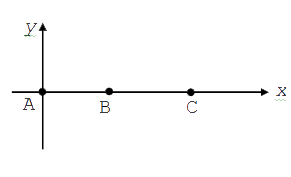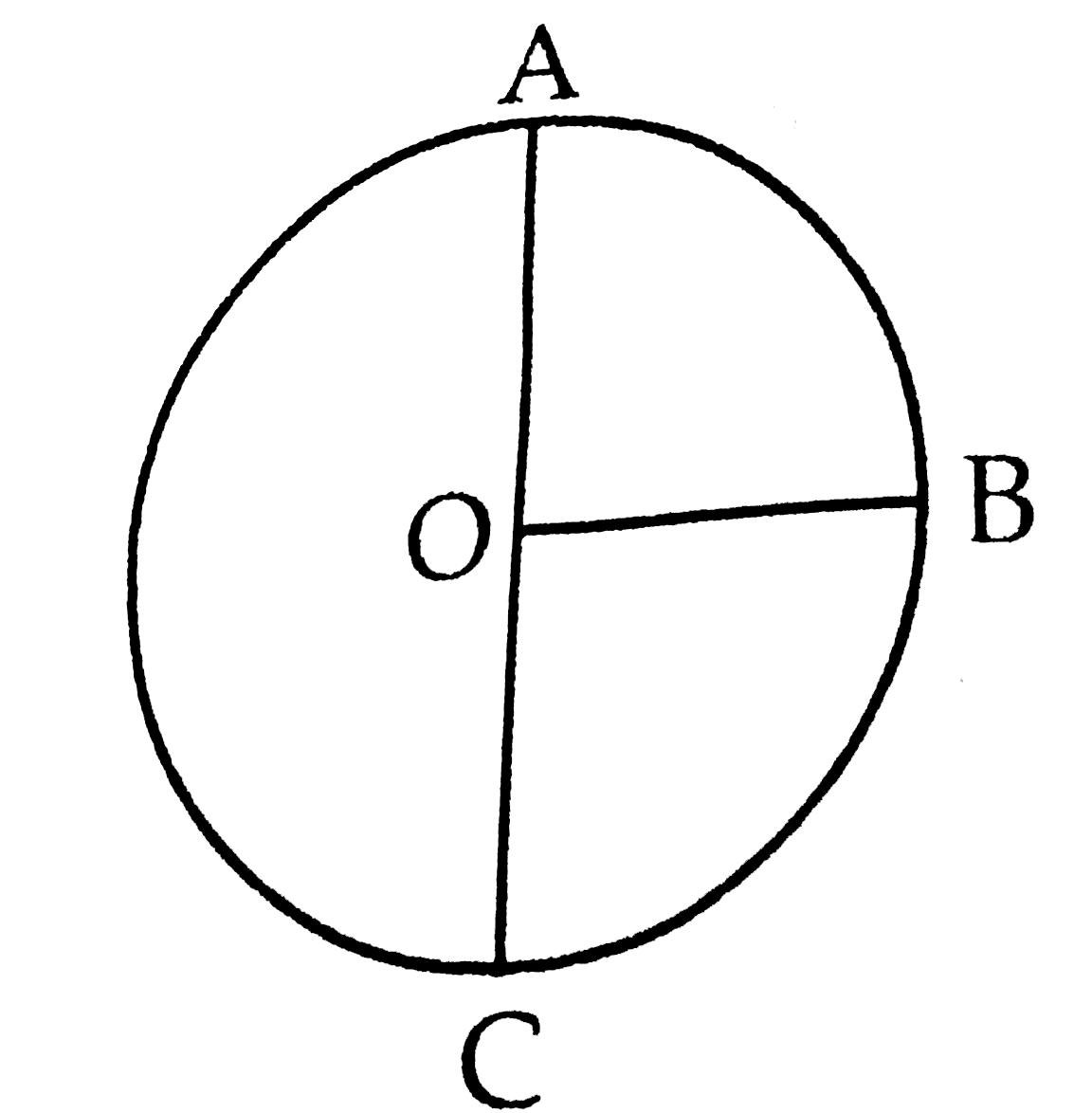At the initial moment three points A, B and C are on a horizontal straight line at equal distances from one another. Point A begins to move vertically upward with a constant velocity v and point C vertically downward without any initial velocity but with a constant acceleration a. How should point B move vertically for all the three points to be constantly on one straight line. The points begin to move simultaneously.
acceleration a/2 and initial velocity v/2 both upwards
retardation a/2 and initial velocity v/2 both upwards
zero acceleration and initial velocity v
acceleration a/2 and initial velocity v both downwards
The correct Answer is:B
Let the three particles be A, B and C located at (0, 0), (x0,0)and(2x0,0) respectively. Initially end A starts moving along positive y axis with constant velocity and C parallel to negative y axis with initial velocity zero but acceleration a.
After time t, coordinates of points A and C respectively are (0, vt) and (2x0,−1/2at2) Let initial velocity of B is u and acceleration is b towards +ve y-axis.
its coordinates after time t are . As x-coordinates of B is the mid-point of A & C always so y coordinates should also be midpoint as they lie on a straight line.
⇒u+bt2=v2−at4 is identity in t⇒u=v/2&b=−a/2

Similar Questions
A light rigid rod is placed on a smooth horizontal surface. Initially the end A begins to move vertically upward with constant velocity v0 and centre of the rod upward with a velocity v0/2 having downward acceleration a0/2, the other end moves downward with
View SolutionThe ratio of velocities at points A,B and C in vertical circular motion

View Solution
Knowledge Check
If three or more points does not lie on the same straight line the points are called -
AConcurrent pointsBCollinear PointsCNon Collinear PointsDAdjacent PointWhich of the following three points represent a straight line?
A(−12,3),(−5,6)and(−8,8)B(−12,3),(5,6)and(−8,8)C(12,3),(−5,6)and(−8,8)D(−12,3),(5,6)and(8,8)Two particles move in the same straight line starting at the same moment from the same point in the same direction. The first moves with constant velocity u and the second starts from rest with constant acceleralion f . Then
Athey will be at he greatest distance at the end of time u2f from the startBthey will be at the greatest distance at the end of time uf from the startCtheir greatest distance is u22fDtheir greatest distance is u2f
A person sitting in a train moving with a constant velocity along a straight line throws a ball vertically upwards, then the ball will
View SolutionA body A is thrown vertically upwards with initial velocity v1. Another body B is dropped from a height h. Find how the distance x between the bodies depends on the time t if the bodies begin to move simultaneously.
View SolutionAverage velocity of a particle moving in a straight line, with constant acceleration a and initial velocity u in first t seconds is.
View SolutionA body starts with some initial velocity along a straight line. After 3s it is found to be a distance of 15m from the starting point. At 4s it is at starting point. What is the initial velocity of the body ? (Assume constant acceleration).
View SolutionA particle is projected vertically upward with velocity u from a point A, when it returns to the point of projection .
View Solution
